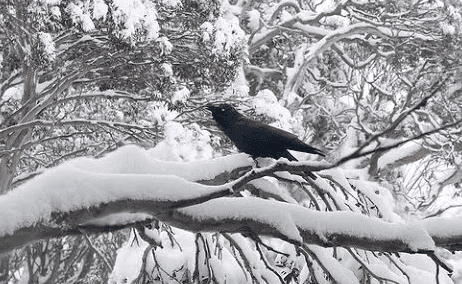Dust of Snow Class 10 Worksheet English Chapter 1
Q1: What change come in the poet's mood?
(a) From joy to sorrow
(b) From hope to despair
(c) From despair to cheer
(d) From anger to harmony
Q2: Who is the poet of the poem "Dust of Snow"?
(a) Leslie Norris
(b) Robert Frost
(c) Carolyn Wells
(d) Robin Klein
Q3: Where was the crow sitting?

(b) on a Hemlock tree
(c) on a Pine tree
(d) on a Gulmohar tree
Q4: Pick the set of options that are related to the idea conveyed in the poem.
i. The state of sadness neither can be ended nor can be avoided.
ii. The state of depression should last for long.
iii. Everyone has moments of sadness or depression in one's life.
iv. The sooner one gets over grief or depression the better it is.
v. The state of depression if not ended will end us.
vi. The state of sadness should continue for long.
vii. Everyone mustn't avoid the state of depression.
a. i, ii, iv
b. iii, iv, v
c. v, vi, vii
d. i, iii, v
Q5: What did poet realise when dust of snow fell on him?
i. That he had wasted his time being in sorrow
ii. That he should utilise his remaining day in doing some useful tasks.
a. Both (i) and (ii) are correct
b. Only (i) is correct
c. Only (ii) is correct
d. Neither (i) nor (ii) is correct
Q6: What do the crow, hemlock tree and dust of snow represent in the poem?

Q7: It is our attitude towards a situation that makes it positive or negative. Do you agree with it? Express your views with reference to the poem ‘Dust of Snow’.
Q8: In the poem ‘Dust of Snow’, how does the poet’s mood get changed?
Q9: A simple moment proves to be very significant and saves the rest of the day of the poet from being wasted. Explain on the basis of the poem ‘Dust of Snow’.
Q10: What do the ‘Hemlock’ tree and ‘Crow’ represent? What does the dust of snow metaphorically stand for?
The solutions of the worksheet "Worksheet Solutions: Dust of Snow"
|
61 videos|945 docs|69 tests
|
FAQs on Dust of Snow Class 10 Worksheet English Chapter 1
| 1. What is the central theme of the poem "Dust of Snow"? |  |
| 2. How does the poet use imagery in "Dust of Snow"? |  |
| 3. What role does the setting play in the poem "Dust of Snow"? |  |
| 4. How does the poem "Dust of Snow" reflect the poet's mood? |  |
| 5. What is the significance of the title "Dust of Snow"? |  |

















